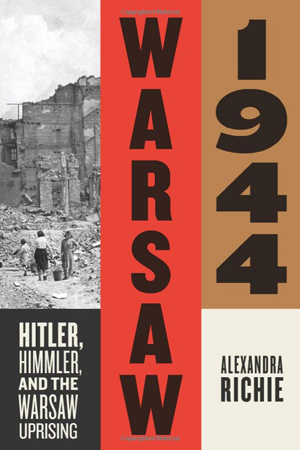 Warsaw 1944: Hitler, Himmler, and the Warsaw Uprising
Warsaw 1944: Hitler, Himmler, and the Warsaw Uprising
By Alexandra Richie
Farrar, Strauss and Giroux, New York, 2013
Despite the thousands of books that have been written by Western historians about World War II a proportionately small number deal with those countries – Poland, Ukraine and Belarus – that bore the brunt of German and Soviet savagery. And, as noted by the distinguished Yale historian, Timothy Snyder, most Western historians never learned the languages nor looked into the archives of these countries.
This situation is gradually changing and Alexandra Richie’s masterful work, Warsaw 1944: Hitler, Himmler, and the Warsaw Uprising, brings to light little-known facts about the Polish resistance, and the barbaric forces against it.
Warsaw 1944 is based primarily on the archive of Władysław Bartoszewski, whose career as a historian, diplomat and eventually free Poland’s foreign minister began as a youthful, but significant, member of the Polish resistance and of Żegota, the Council for Aid to Jews. He is also a former prisoner of Auschwitz and has dedicated much of his life to promoting peace, to reconciliation with Germany, and to Polish-Jewish dialogue. His life is worthy of its own book.
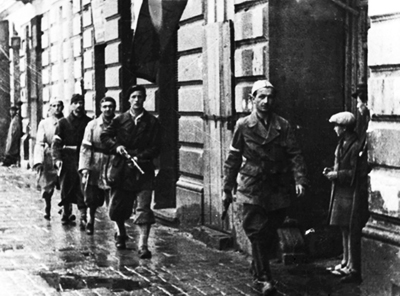
AK (Home Army) troops marching to battle on August 1, 1944.
‘Agaton’ leads his platoon.
By permission: Zygmunt Walkowski & Farrar, Straus and Giroux, LLC
Richie also used first person accounts but although she was able to talk to dozens of people who took part in this historic drama, she relied primarily on the testimonies given to the Polish War Crimes Tribunal in the 1940s “as they have an immediacy and accuracy that can sometimes fade later in life.”
Richie, author of Faust’s Metropolis, A History of Berlin, is no stranger to German history and, like Bartoszewski (her father-in-law), is well aware that the years of Nazi rule do not obliterate the German culture of Kant, Goethe and Bach. At the same time, however, the work of such cultural giants does not obliterate the nadir of German history.
Every chapter of Warsaw 1944 begins with a passage from the history of Carthage because the rulers of Rome, like those in Berlin some two thousand years later, decided that the city had to be “attacked, conquered, and erased from history.” This parallel brought to this reviewer’s mind a passage written by a young man who lived through the occupation: “We had a deep sense of affinity with the fate of the slaughtered races, with peoples taken into bondage, with inhabitants of cities destroyed by flames, and with devastated cultures.”
The story unfolds well before 1944, indeed with the very beginning of the war when Germany and Soviet Russia signed a secret agreement to destroy the state, murder or enslave the people, and partition the country between them. From that point on, from September 1939, the criminal leadership of the two regimes launched a war of relentless violence against the civilian populations of Poland, Belarus and Ukraine, resulting in a 20 percent mortality in Poland and a staggering 50 percent in Belarus.
The German atrocities were largely carried out by the SS, notably the Dirlewanger SS brigade and by the collaborationist Russian National Liberation Army (RONA), forces that had already sunk to the depths of depravity in their attack in Belarus. The German military leadership must bear full responsibility for using these two notorious armies of thugs and psychopaths, but the Wehrmacht was never far removed from the killing fields and committed atrocities in keeping with the ideology that had been drilled into them. The SS were thugs, but there were also German officers enjoying wine and pleasant conversation after ordering Polish prisoners to dispose of the corpses from the day’s killing.
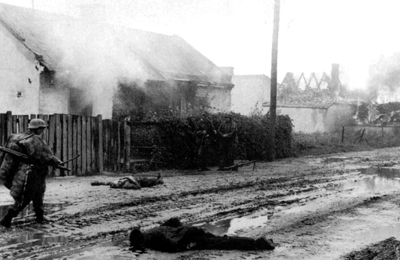
German troops under Heinz Reinefarth entering Wola engaged in the indiscriminate killing of men, women and children.
By permission: Zygmunt Walkowski & Farrar, Straus and Giroux, LLC
Hitler’s determination to destroy Poland and to literally raze Warsaw to the ground and on its site build a small medieval German town was well known to his military leaders. That he still pursued this goal in 1944 when his defeat was obvious to many is indicative of his insanity, and yet he continued to command obedience. True, some high ranking officers did make an assassination attempt in the summer of ’44, but this group was small and, it must be said, they were inspired primarily because they could see disaster looming for Germany and not because of the crimes that had been committed up to that point.
Given Germany’s strength and ruthlessness, the question constantly looms: why did the Poles risk the uprising?
Some of the answers are obvious. The brutality of the occupation strengthened their resistance rather than weakened it. The generation of the resistance, the first generation in a century to grow up free and full of hopes and plans for the future were singularly unwilling to submit. Then, in late spring of 1944, the Soviet Army was approaching, its radio encouraged a rising and it seemed they would help. At the same time, the Poles were familiar with the army that was coming to “liberate” them and understandably preferred to liberate themselves. Did they really believe they had a chance? Did they really believe the Soviets would help them?
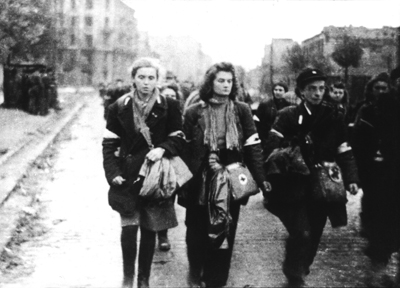
The AK was unusual in that it included a high number of women,
working as nurses, explosive experts and runners.
Here they leave the city as prisoners of war in October 1944.
By permission: Zygmunt Walkowski & Farrar, Straus and Giroux, LLC
This is a controversial topic. To be sure, considering the cost, the uprising was a catastrophe and there are many voices, including very sympathetic ones such as that of the great general, Władysław Anders, who were strongly against it. In his opinion, “You can never trust the Soviets – they are our sworn enemies. To hold an uprising whose only success depends on either the collapse of your enemy or help from another enemy is wishful thinking beyond reason.”
Richie does not hesitate to be critical and identifies the mistakes in leadership, in analyzing intelligence reports, and in strategy. But, to her credit, she does not condemn General Bór, but describes him as “a tragic figure… a decent and honorable man trying to do the right thing.” She cites another heroic figure, the famed courier Jan Nowak-Jeziorański who said: “…he [Bór] would not have been able to find a solution to the tragic situation in which Poland found herself at the time. Once again we were crushed in a mortal embrace of two deadly enemies. No matter which decision the General would have taken – to fight or not – each enemy would turn against the nation…”
And so it was. After 63 days of fighting, the uprising was defeated with wanton cruelty and great loss of life. The city of a population of a million was emptied of all its inhabitants who were robbed of every possession, sent to forced labour or to concentration camps, or dispersed to eke out an existence in a war-ravaged countryside. Warsaw lay in ruins but even that did not satisfy Hitler who ordered the systematic dynamiting of whatever remained standing.
The Soviets, who had halted their army on the other side of the Vistula, finally entered the city three months after the fighting ceased, to liberate the ruins. They have their defenders who claim they could not have helped earlier, though that is true only at the outset of the uprising. By September they could have helped the people, and certainly could have prevented the systematic looting and burning of the empty and devastated city. Nothing, however, can explain away Stalin’s refusal to allow Allied airmen to use Soviet airfields, one only 30 kilometres from Warsaw, to aid the insurgents. Perhaps Soviet apologists protest too much.
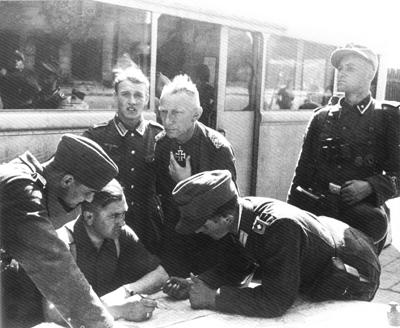
Heinz Reinefarth (centre standing) ordered the massacre in Wola. Later achieved high office in Germany and never charged for his crimes.
By permission: Zygmunt Walkowski & Farrar, Straus and Giroux, LLC
Every library went up in flames including the oldest public library with its 400,000 printed items dating from 1747; the Czetwertyński libraries with tens of thousands of manuscripts, the National Archives with its historic records, papers and documents. Every historic landmark was destroyed: churches, palaces, museums, and statues, as were schools, universities, hospitals, clinics, industrial and commercial buildings, and homes.
With few exceptions, no leading Nazis were ever prosecuted for crimes they committed during the Warsaw Uprising, and many were proud of what they had done. Ludwig Fischer called it an “undoubted victory of the German army after so many failures… holding Warsaw despite it staging the biggest uprising in Polish history is one of the greatest achievements of the German army.”
And yet, Richie’s uncompromising account disturbs some people. Was it “Polonocentric?” Given her subject, one wonders just which other country and people could reasonably have been her focus. A review in The New Statesman by Professor Richard J. Evans acknowledges the importance of Richie’s book – though he has a hard time admiring Poles – but he thinks that quoting the German officer who spared “the Pianist” Władysław Szpilman’s life would add “nuance,” and that there is too much stress on “human savagery” while neglecting military strategy, high politics, diplomacy.
Unfortunately, the savagery is beyond being “nuanced” away, and Richie does not ignore the role played by the diplomats, generals and assorted world leaders. The suffering inflicted on the helpless victims of this tragedy was part of the grand strategy of German leadership, including the generals, and at the same time it was not a matter of great importance to Allied leaders. In any case, while diplomats and generals may be more elegant (just the thing for the History Channel), it is useful to know just what their strategies did to the people on the ground. It’s a very different kind of photo-op.
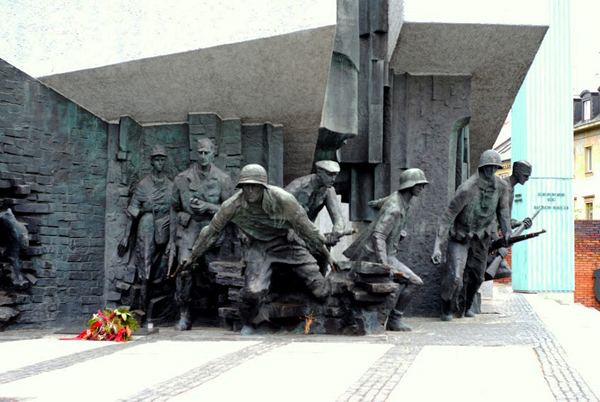
Warsaw, Poland:
The monument in honour of the men and women of the Warsaw Uprising.
In the end, Richie does well not leave the last word to Fischer’s boast about a modern army defeating an unarmed civilian population. “Warsaw rose again. It is as testament to its people that the city has turned itself into one of the most exciting, dynamic and innovative in Europe. Despite everything, the people of Warsaw have persevered, and their city lives on.”
CR
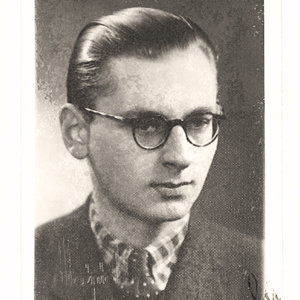

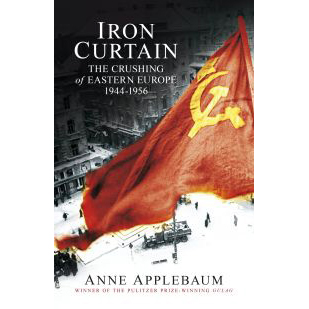

My parents were both slave laborers in Germany and then DPs for another six years before emigrating to America in July, 1951. History can never tell all of the horrors and destruction unleashed by both Germany and the USSR.
Pingback: Potsdam and Poland
Pingback: Chatting with B.E. Andre, “With Blood and Scars” Author
Pingback: Nagroda dla Kanadyjki w Polsce
my father zbigniew lewandowski was taken as forced labour in 1939 and then to germany 1944. his mother genowefa lewandowska died in ravensbruck camp. i am always looking for extra information on my family.
wayne lewan
Pingback: Warsaw 1944: Hitler, Himmler, and the Warsaw Uprising – Snapzu Places
Pingback: Warsaw 1944: Hitler, Himmler, and the Warsaw Uprising – Snapzu Earth